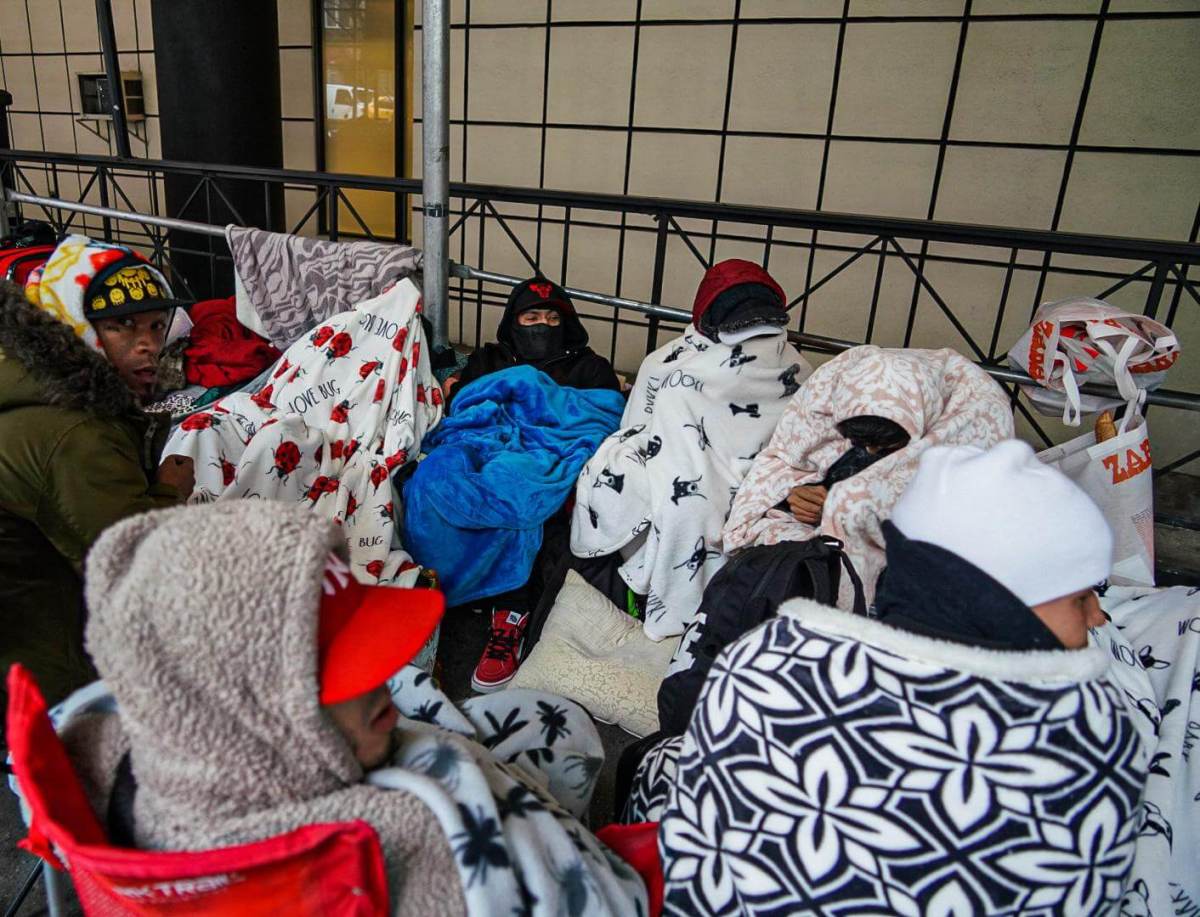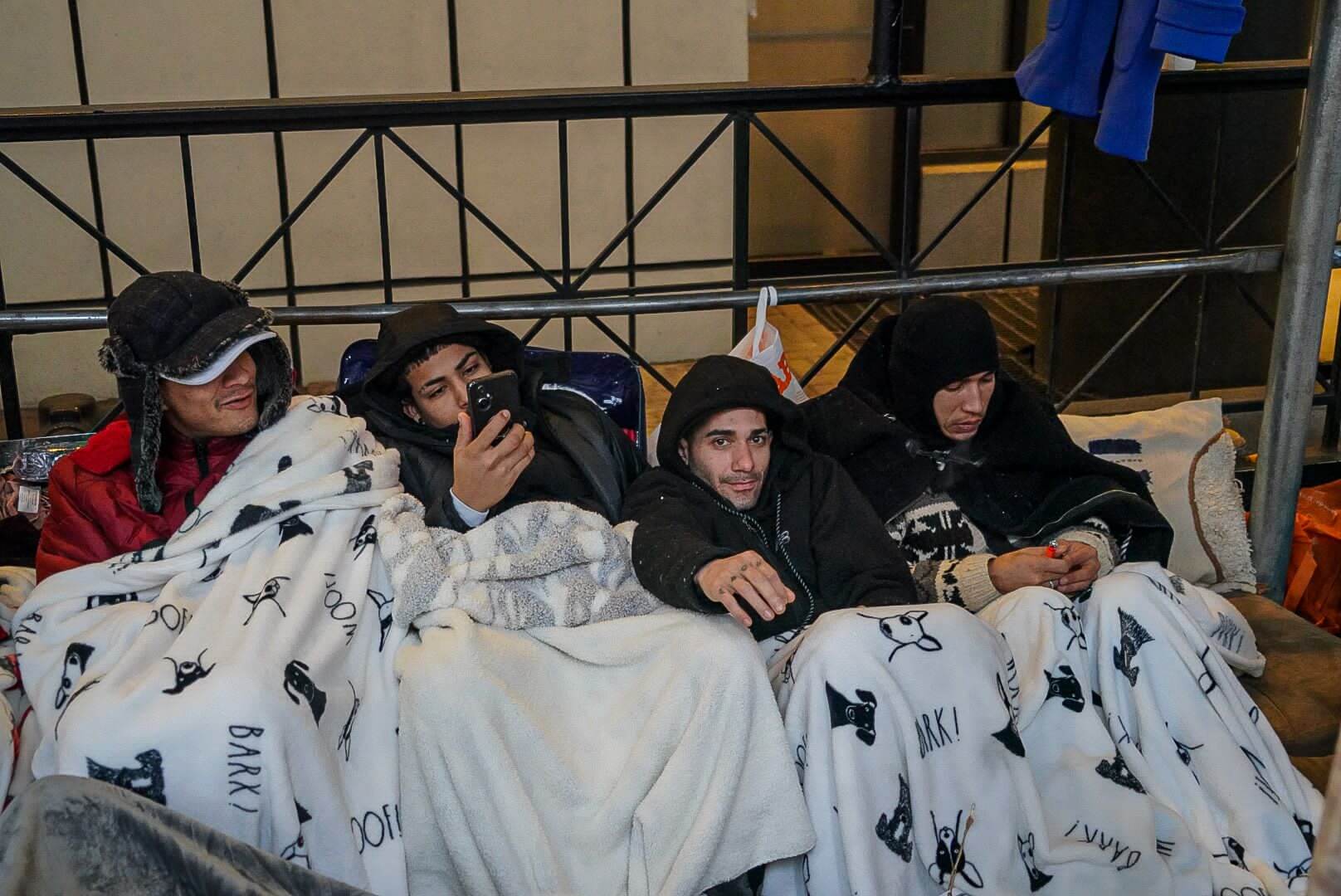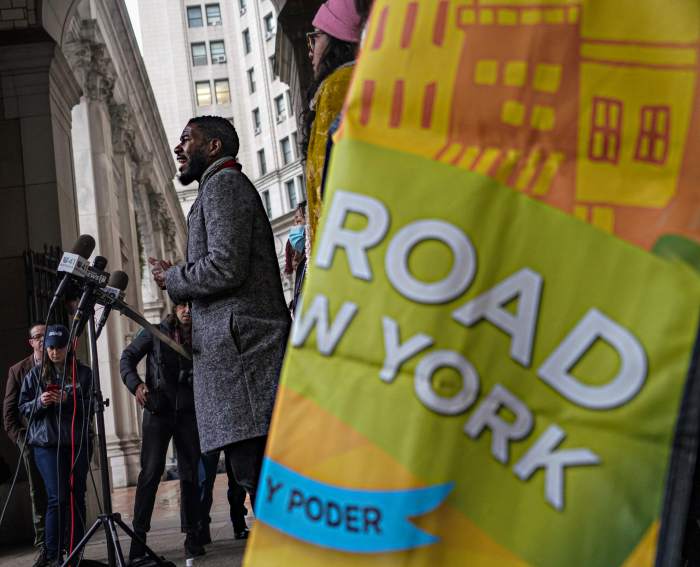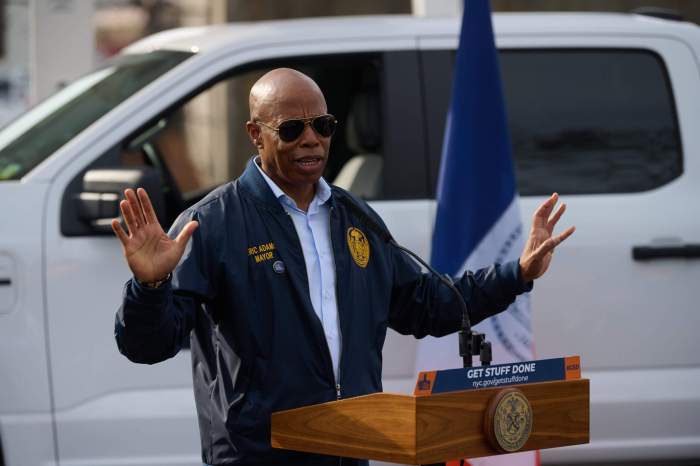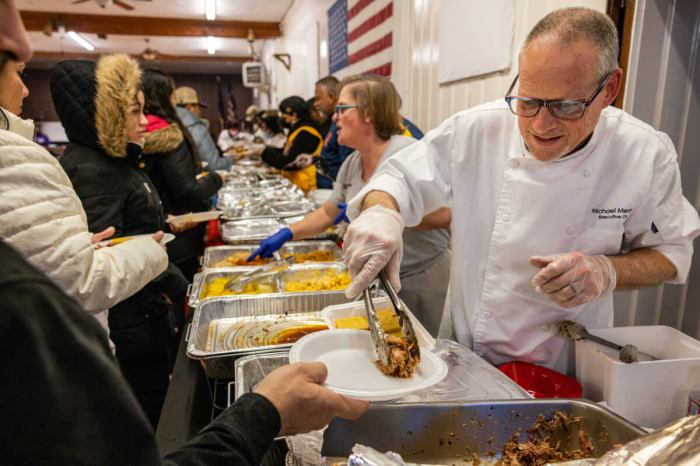The standoff between the city’s migrants and government officials continued in Midtown on Tuesday, 48 hours after it began — but major talks appear to be underway between asylum seekers and the Adams administration.
Approximately 100 asylum seekers remained outside their former home, the Watson Hotel located on West 57th Street, on Jan. 31. The hotel locked its doors late Sunday night as the city attempted to transfer migrants to Brooklyn in an effort to make room for asylum seekers with children. The huddled masses refused to go, causing chaos on the streets of Manhattan.
Believing that the new Humanitarian Relief Center in Red Hook could harbor unsafe conditions for the hotels’ former residents, many locked out migrants chose instead to sleep outside their former digs. Others told amNewYork Metro they’d been given tickets to Plattsburgh, New York and endeavored to make their way into Canada.
On Tuesday, the New York City Police Department blocked off the sidewalk outside the Watson, barring pedestrian traffic as local mutual aid groups offered food and water to those standing in defiance.
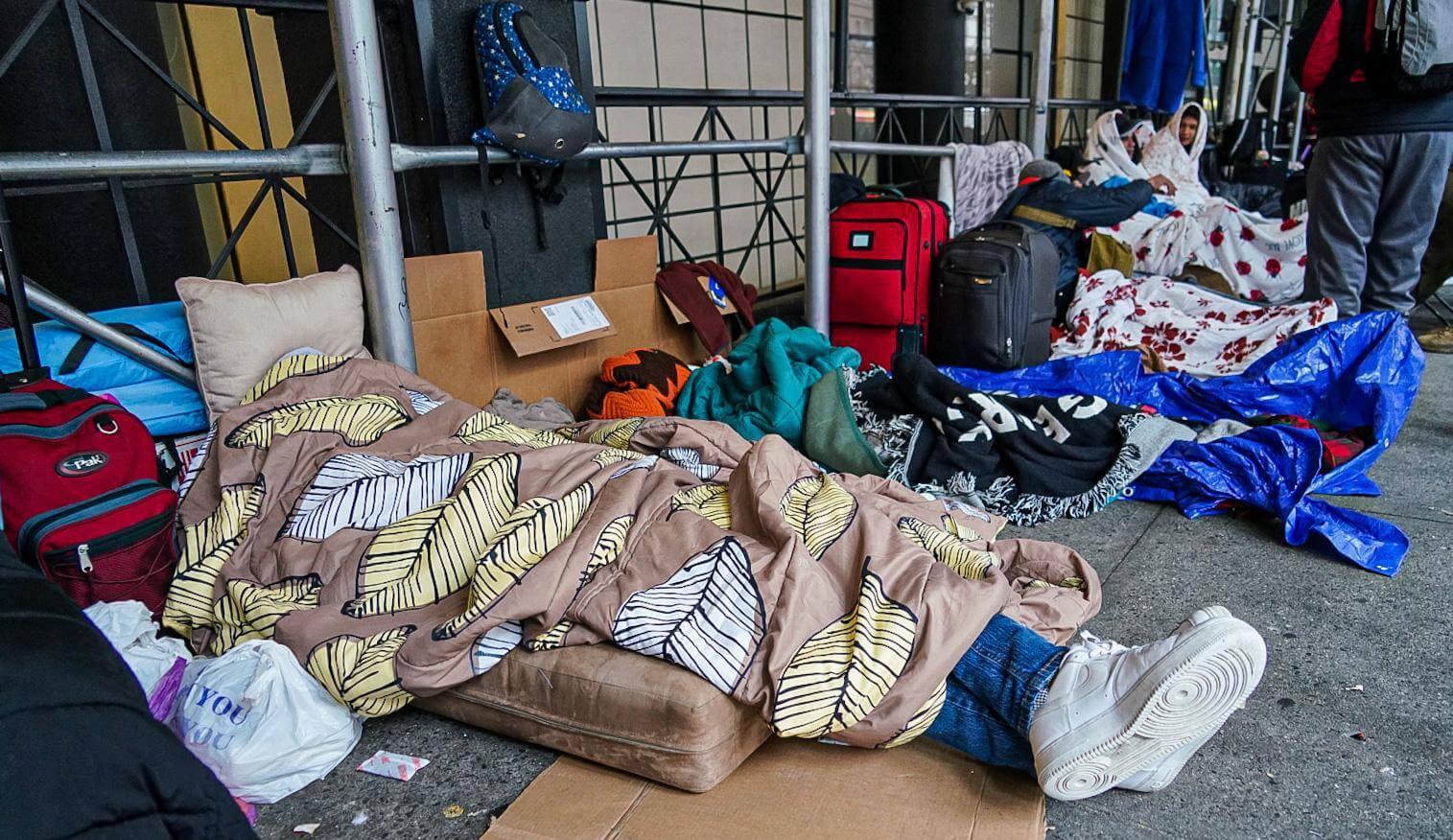
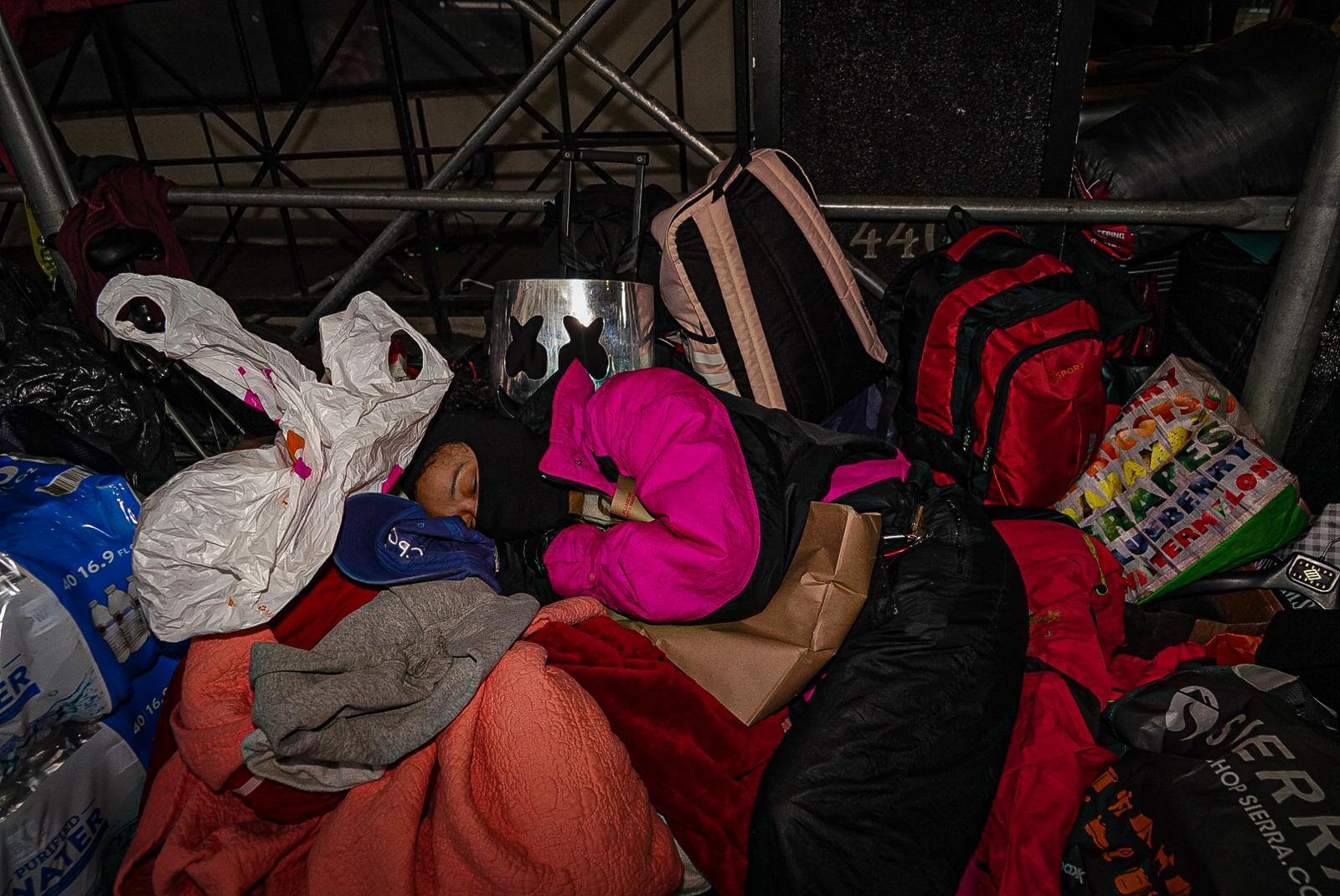
Those who remained outside the Watson huddled in blankets beside their few belongings, shivering from the cold. However, city officials are working to end the impasse.
Commissioner Manuel Castro of the Mayor’s Office of Immigrant Affairs agreed Tuesday to travel with several of the leading migrants on an MTA bus to Brooklyn in order to prove that the conditions are satisfactory.
#Breaking: Mayor’s Office of Immigrant Affairs Commissioner @MCastroMOIA agrees to ride along with asylum seekers to the Brooklyn Humanitarian Relief Center to prove conditions #watsonhotel #migrant pic.twitter.com/XU9VvoWwXi
— Dean_Moses (@Dean_Moses) January 31, 2023
“I’ll walk them through the facilities and they’ll see it’s temperature controlled, they’ll have access to food, they‘ll have access to all kinds of services,” Castro said. “In fact, they’ll have access to free ferry and bus services that will take them. They’ll be able to commute differently.”
Castro exited the Watson Hotel with several migrants and boarded a bus bound for the Red Hook Terminal with the hope that, if they find the accommodations agreeable, the stalemate will come to an end.
The commissioner told amNewYork Metro that the protest is largely based on “misinformation,” many migrants believing what’s waiting for them at the Red Hook facility to be detainment.
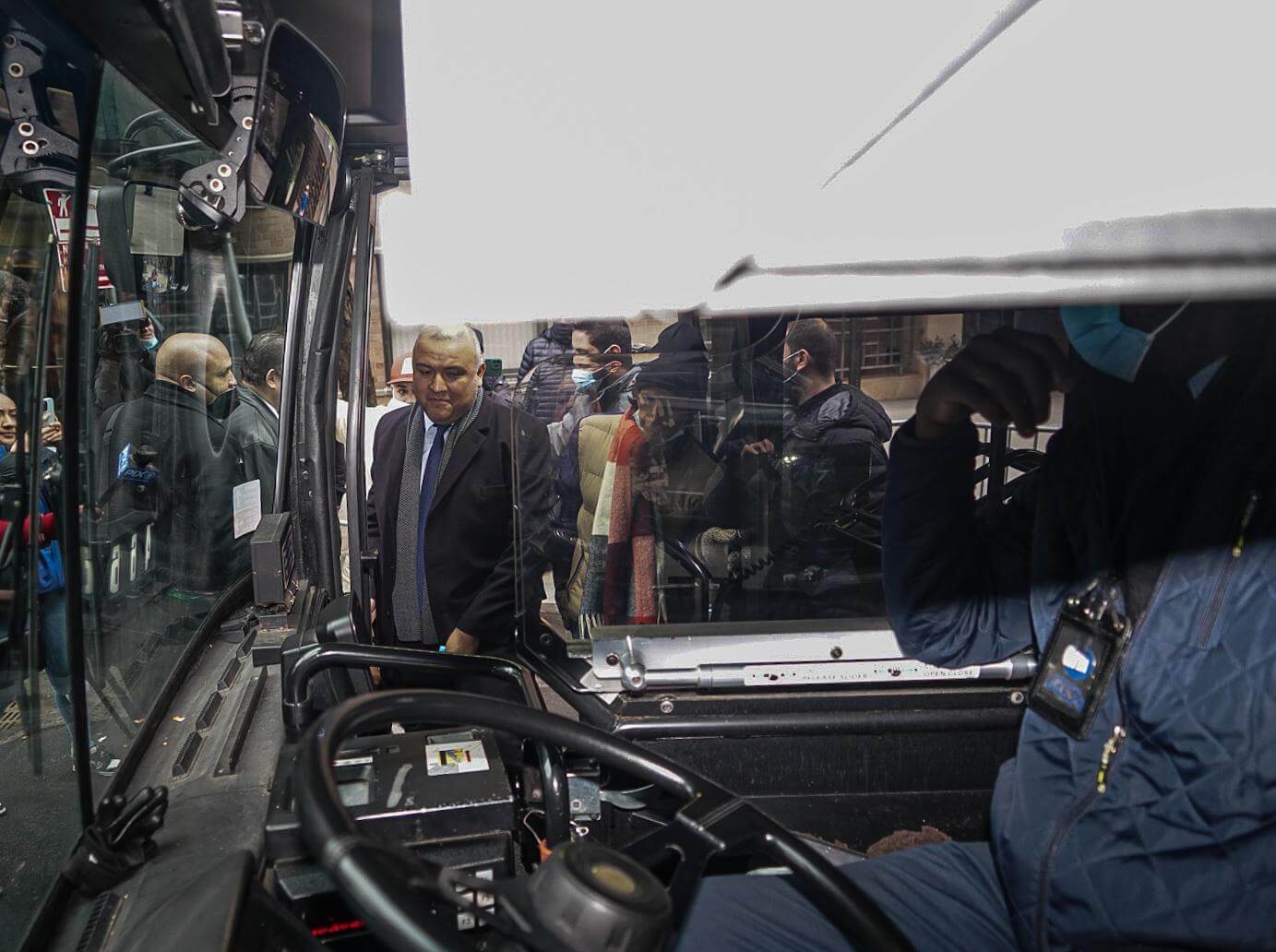
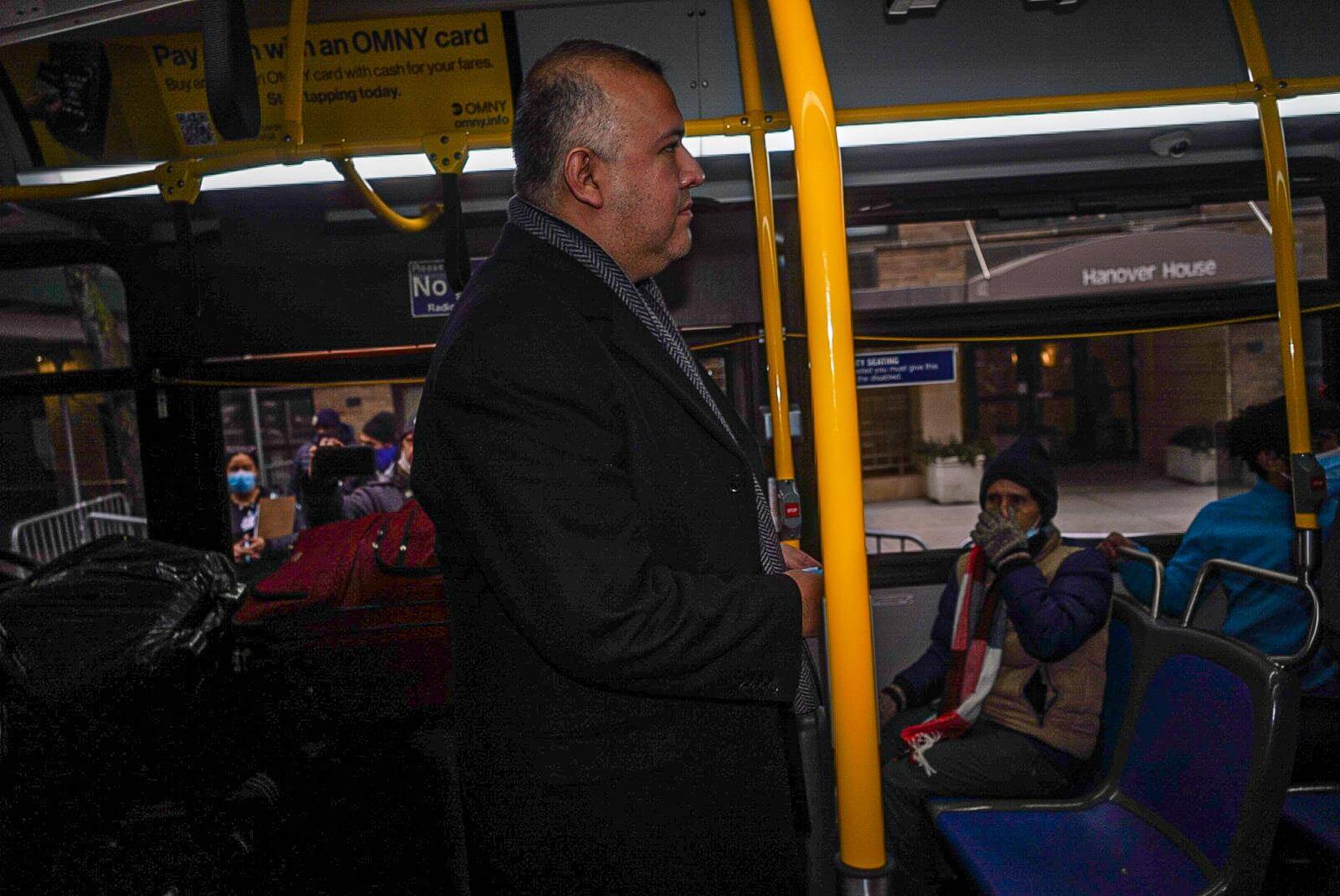
“It’s unfortunate. It’s preying through social media. Again, we are not setting up a detention center, we are not setting up ICE boxes. It’s been said, we are definitely not deporting people,” Castro said.
“We want to make sure that immigrants trust the city because we have to make sure they access critical services, emergency services like medical services, public safety services,” Castro added. “This is not helping anyone. It’s quite dangerous to say that we are sending them to detention centers. We are not forcibly removing people and sending them to a camp.”
However, several advocates disagreed with Castro’s claims.
Grassroots immigrant rights organization Make the Road New York released a statement in which they denounced the city for the transfer.
“We condemn the City’s action to force asylum-seekers to move to the Brooklyn Cruise Terminal and then leave them out in the cold when they raise concerns about the new site. The city must treat recently-arrived people as just that–people, who need stability to have a functional day to day life, not puzzle pieces to be moved around arbitrarily,” the statement read. “People should be allowed to stay where they are until they secure permanent housing, and not be moved aggressively to remote locations that disconnect them from much of the rest of the city.”
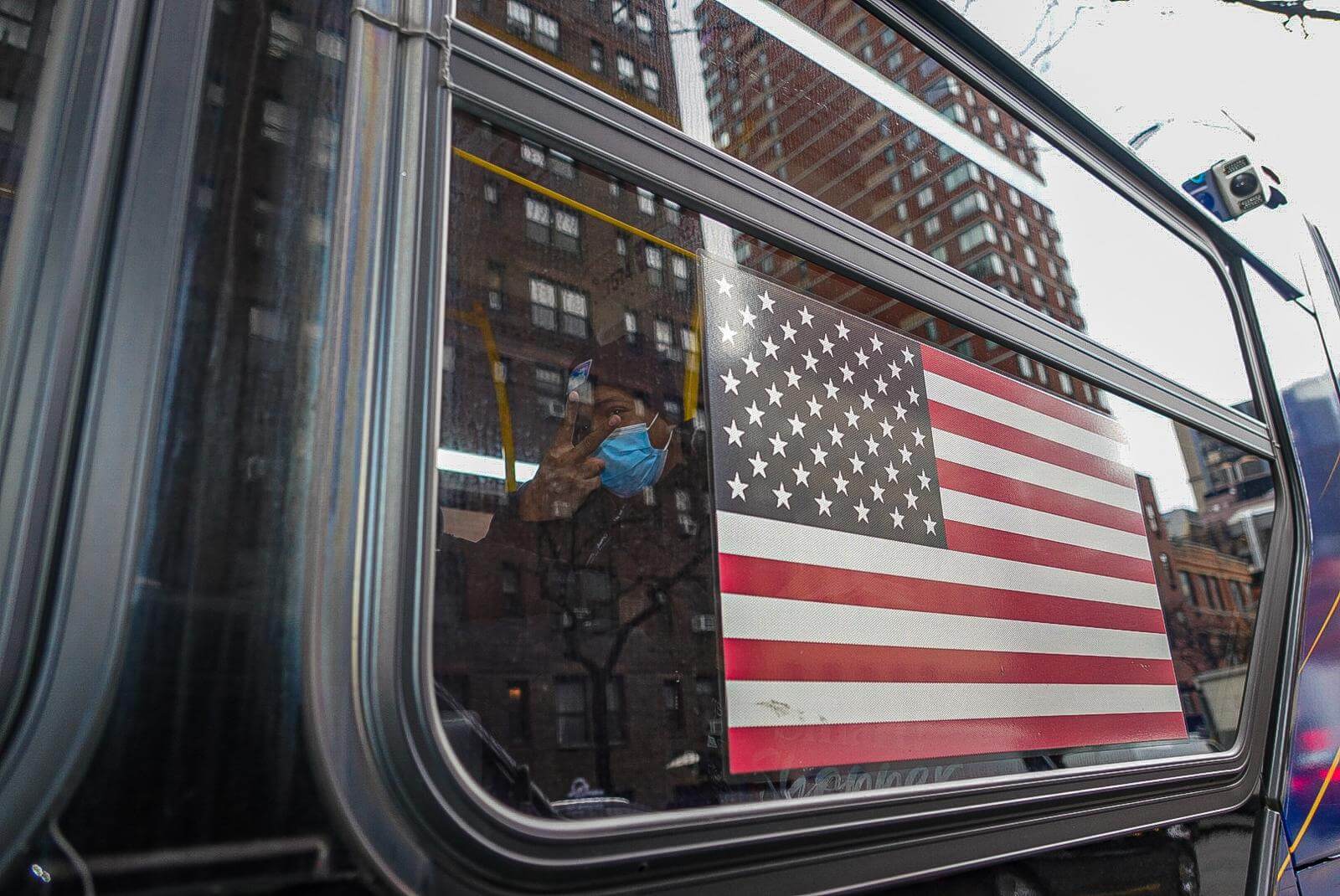
The return
Later Tuesday afternoon, migrants returned to the Watson Hotel after visiting the Brooklyn Cruise Terminal, gathering with those still camped out. There, they shared what they witnessed at the Humanitarian Relief Center — which they called a congregate setting with little to no privacy.
One asylum seeker, who wished to remain anonymous, told amNewYork Metro he was not happy with what he saw at the relief center, which was why he decided to inform others before they made the trip to Brooklyn.
“The showers are outside of the building. Everything is together. The bathrooms are together. There is no privacy,” the man said. “There are not a lot of people there.”
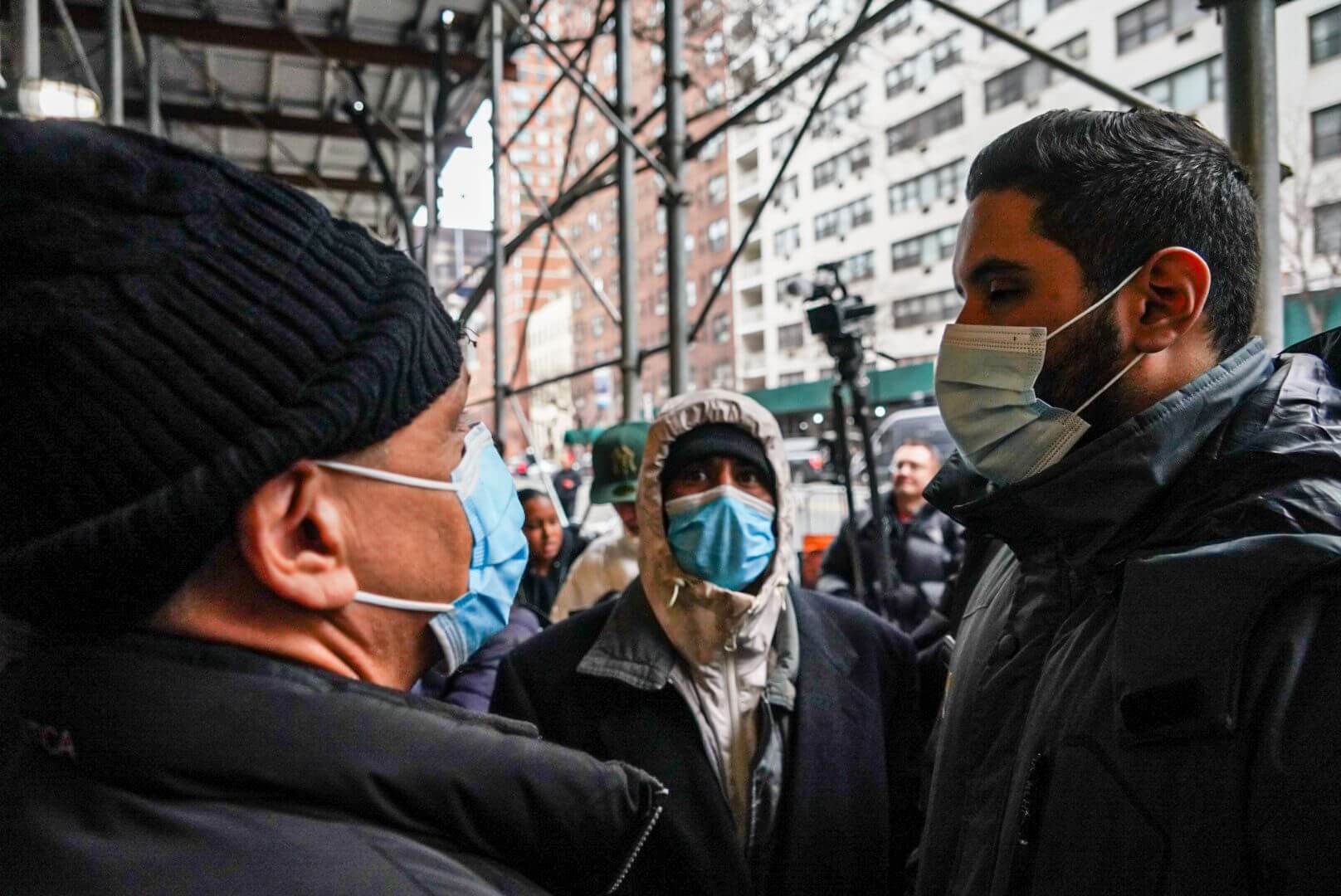
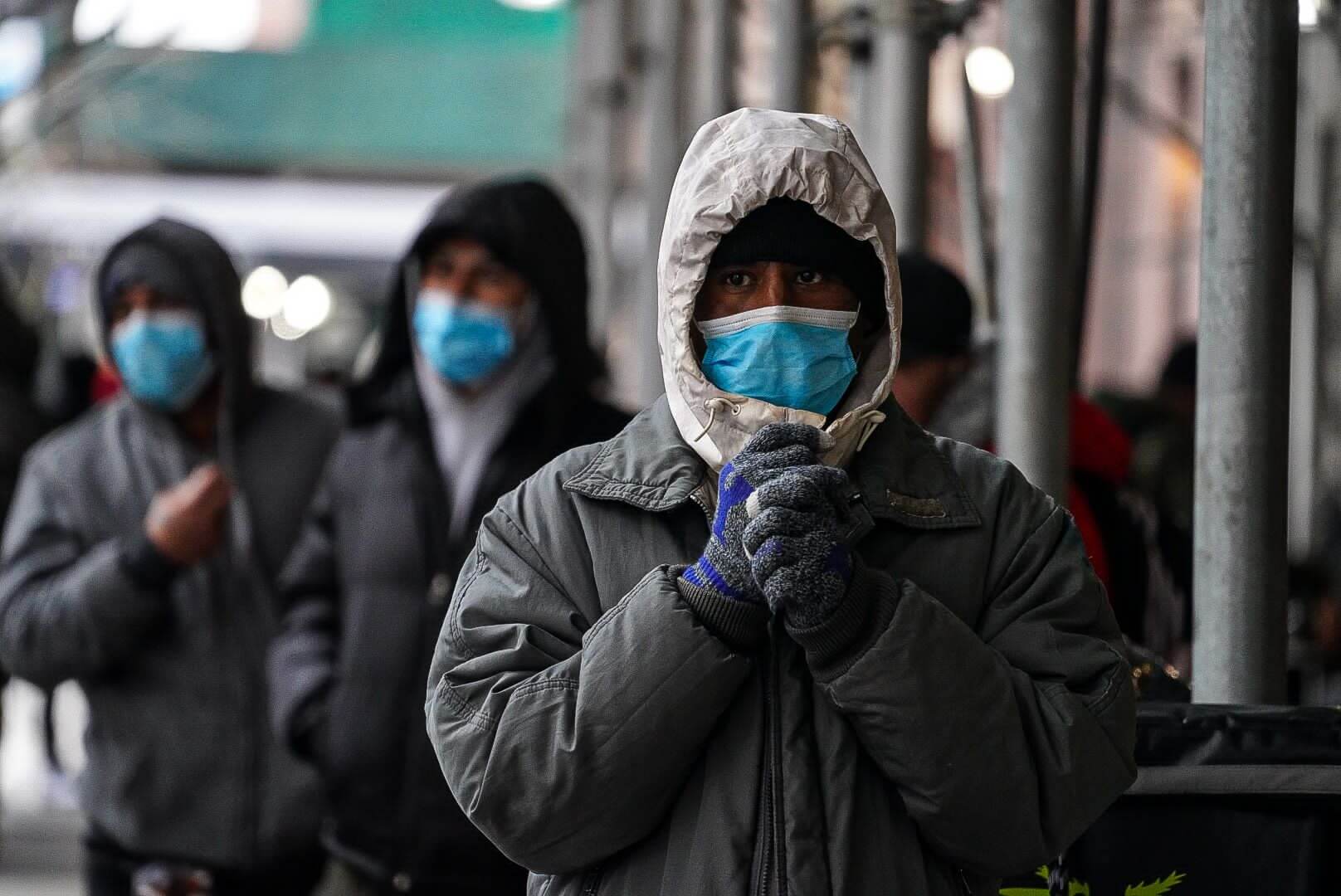
When asked if they would rather brave the cold or take up the city’s offer, the man said simply: he wasn’t sure yet. He stressed that he was given two options — either to go to the 30th Street Men’s shelter on First Avenue or to the Brooklyn Cruise Terminal. Both are congregated settings, but according to Castro, the Humanitarian Relief Center offers specialized services for migrants.
“Just these two options. If we don’t take these options, [the city] don’t do anything for us,” the man said. “The shelter in Brooklyn is like for an emergency moment. It’s like a jail but it’s because they have an emergency with immigrants.”
In video clips obtained by amNewYork Metro, it can be seen that the Brooklyn Cruise Terminal consists of one large room filled with hundreds of cots stitched together in rows, similar to how the Randall’s Island relief center appeared.
Some men who were still housed in the Watson Hotel were transferred to Brooklyn Cruise Terminal throughout the day while their peers continued their protest.



